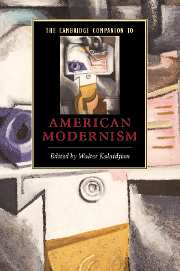7 - Visual culture
from Part II - Culture
Published online by Cambridge University Press: 28 May 2006
Summary
As far back as the seventeenth century, when Descartes realized that much of the essential work of eyesight, beginning with the inversion and synthesis of the retinal images, is done by the mind, then the basis for the study of visual culture was established. In 1953, however, when Leo Steinberg published “The Eye is a Part of the Mind,” the title was a polemical assertion intended to rebut the influential position of Clement Greenberg, who insisted that “aesthetic judgements are immediate, intuitive, undeliberate, and involuntary.” Since that time, the idea that vision is not an automatic, unvarying process has been a part of important controversies in philosophy, history, aesthetic theory, and literary studies. In their very different ways, scholars such as Richard Rorty, Norman Bryson, and Jonathan Crary have worked to replace a mechanistic, essentially mimetic model of vision with one that is physically, historically, and culturally determined.
The idea that vision is at least affected by culture may have occurred to so many scholars at this time because the culture of their period seemed so predominantly visual. It has been common at various different times over the last century or so to bemoan the fact that society has come to be dominated by images, a lament based on the assumption that images require less thought to process than words. The term visual culture has also come to stand, therefore, for a host of practices including photography, film, television, and the Web, which together sometimes seem to have assembled a purely spectatorial society. In fact, these two different usages reveal a good deal about the term visual culture and the culture that uses it. With the emphasis on the noun, visual culture designates a highly intellectualized scholarly practice based on the idea that vision is itself a physically, historically, and culturally intricate process; with the emphasis on the adjective, the term designates a dumbed-down culture, force fed on spectacle.
- Type
- Chapter
- Information
- The Cambridge Companion to American Modernism , pp. 177 - 194Publisher: Cambridge University PressPrint publication year: 2005
- 2
- Cited by

